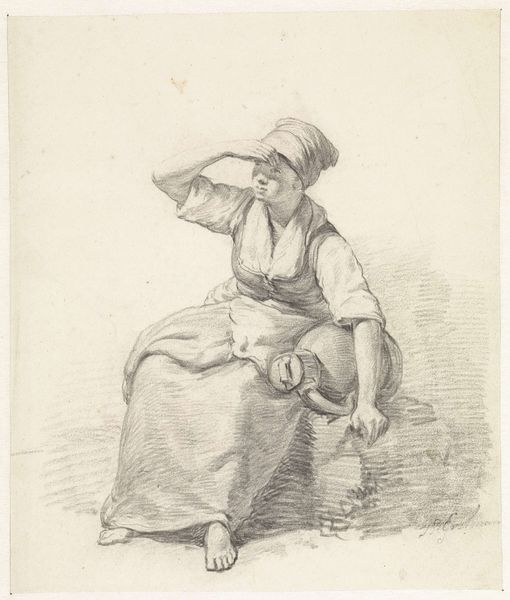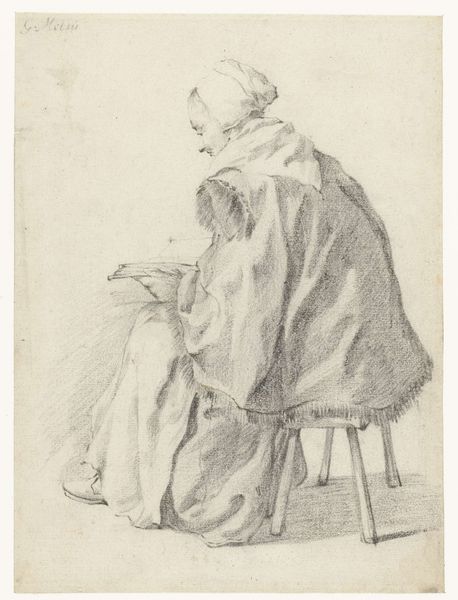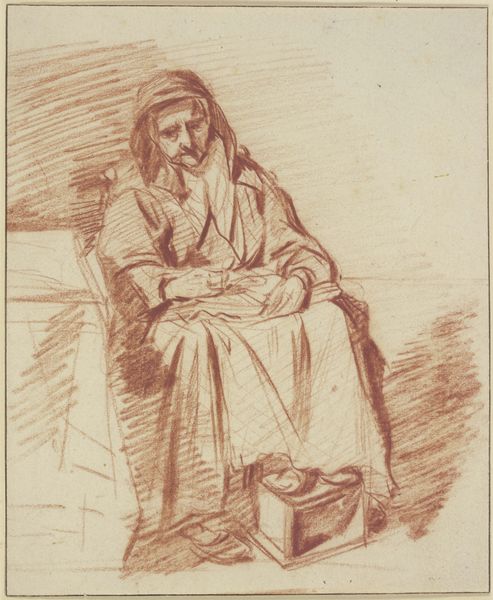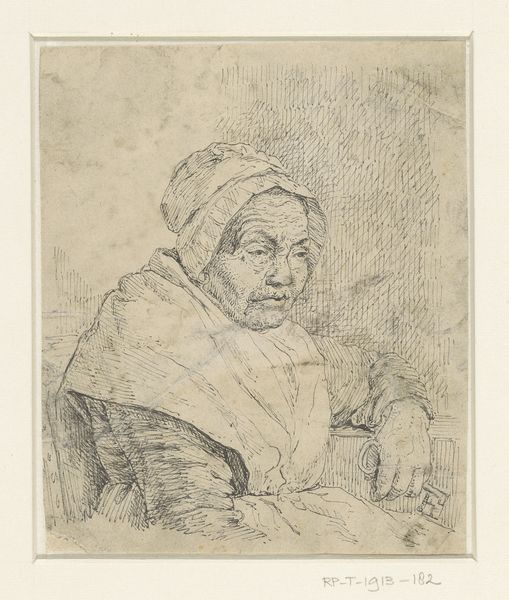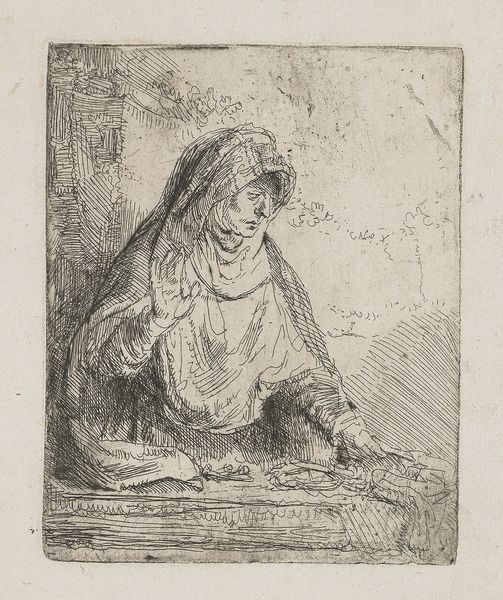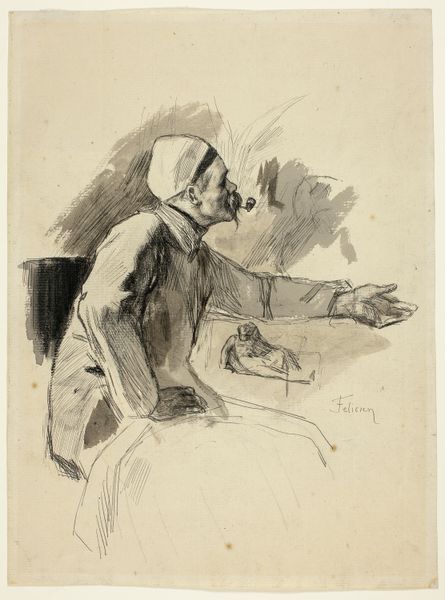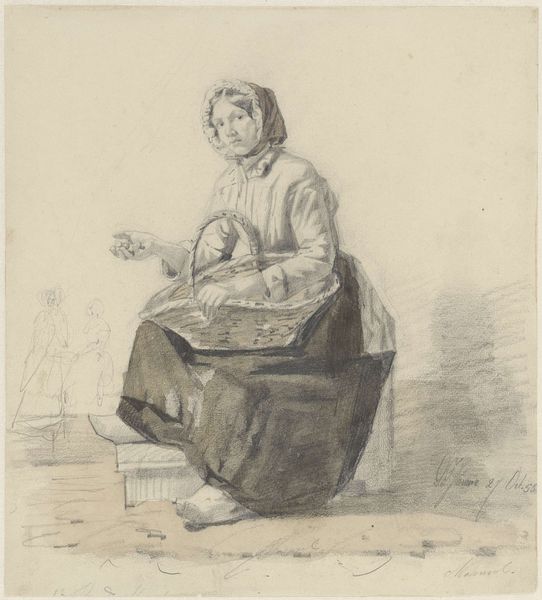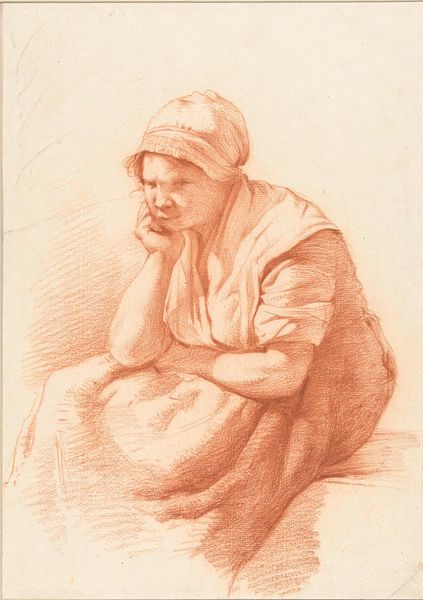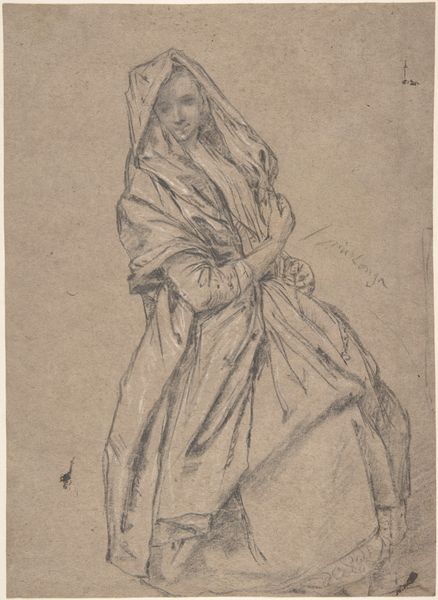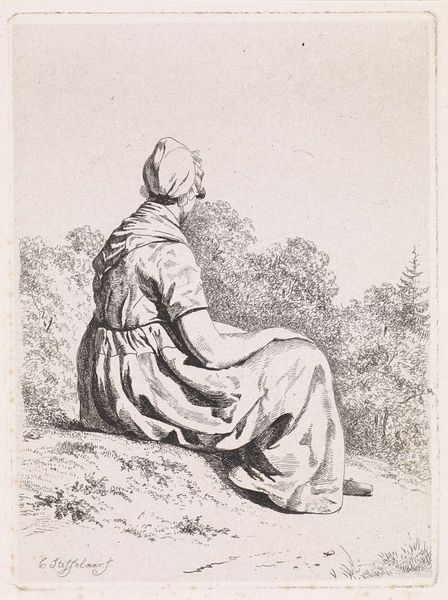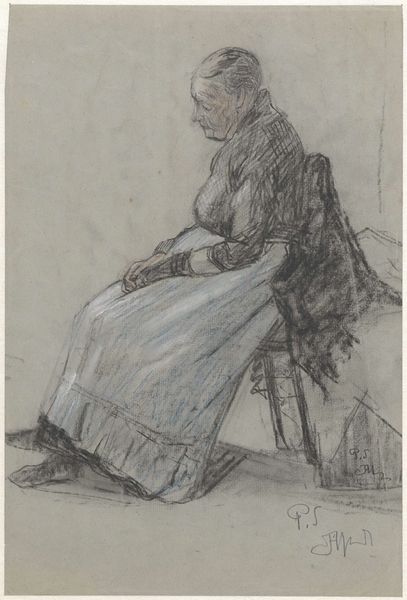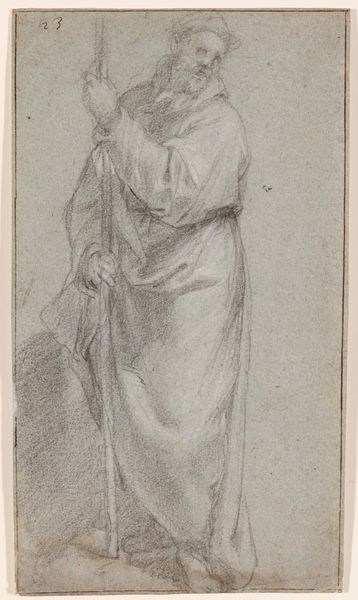
drawing, ink
#
portrait
#
drawing
#
baroque
#
dutch-golden-age
#
charcoal drawing
#
figuration
#
ink
#
pencil drawing
#
portrait drawing
Dimensions: height 175 mm, width 134 mm
Copyright: Rijks Museum: Open Domain
This drawing was made by Rembrandt van Rijn, using pen and brown ink on paper. It depicts a woman, possibly his wife Saskia, seated by a window. What strikes me is the directness with which Rembrandt approaches his materials. The brown ink, fluid and translucent, is applied with a practiced hand. The strokes vary in weight and intensity, creating a sense of volume and light. Look closely and you'll see the subtle hatching and cross-hatching, building up the shadows and defining the folds of her clothing. This wasn't just casual practice. Paper in the 17th century was an expensive material. The type of paper and ink, the artist’s skills, and the labor involved in producing these materials, all contributed to the artwork's social and cultural significance. Rembrandt’s expressive lines capture the essence of his subject with remarkable efficiency, showing his mastery of the medium. By attending to these details of process and material, we gain a richer understanding of the artist's skill and the cultural context in which the drawing was made.
Comments
rijksmuseum about 2 years ago
⋮
This drawing is often regarded as a ‘portrait’ of Saskia. If so, she consciously plays a role here. Wearing a simple cloth around her head and an apron, it seems as if she has come straight out of the kitchen. Saskia, however, was a mayor’s daughter and married to an artist full of social ambitions. She would thus never have walked around the house dressed like a kitchen maid.
Join the conversation
Join millions of artists and users on Artera today and experience the ultimate creative platform.
